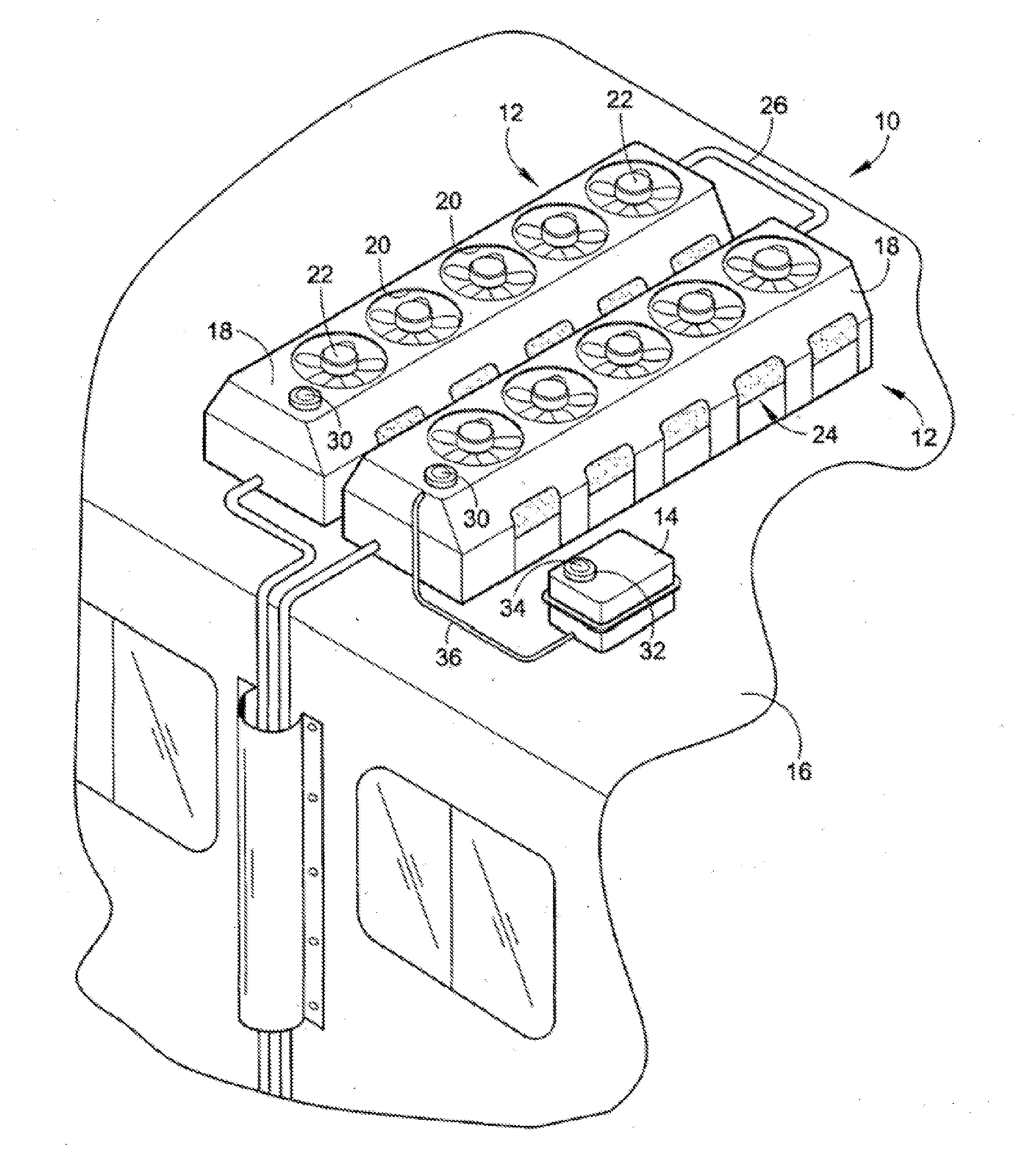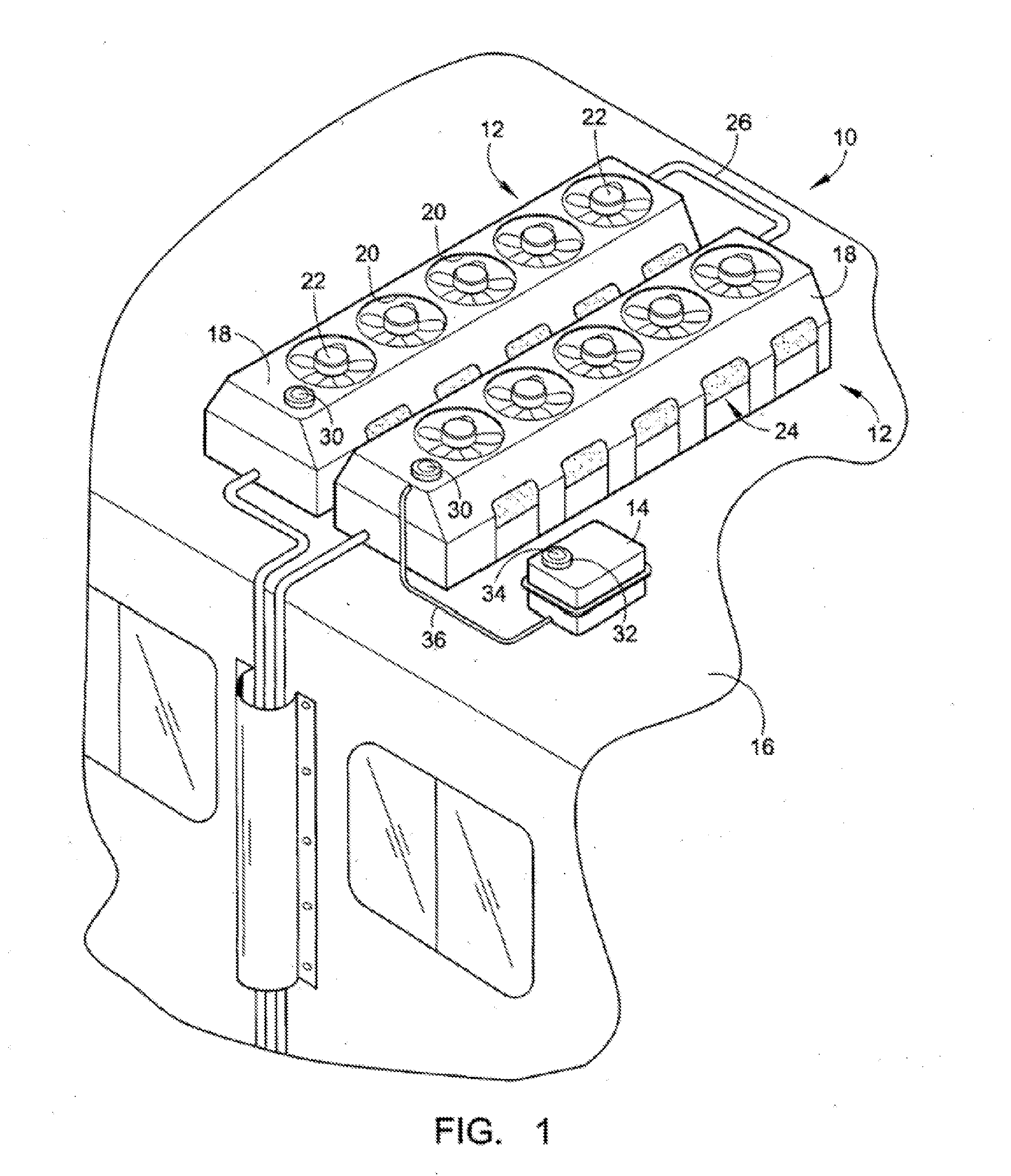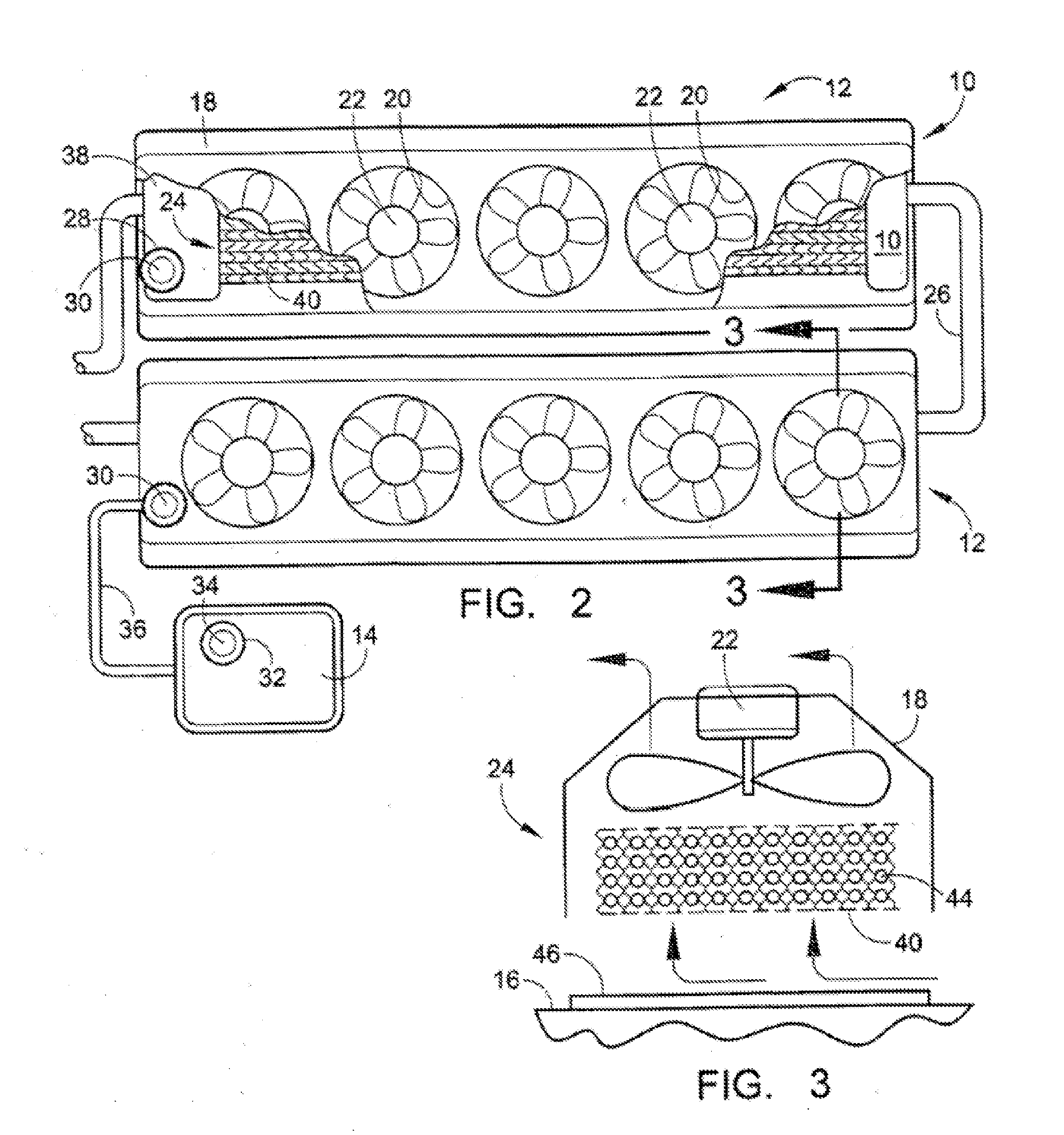Vehicle Rooftop Engine Cooling System and Method
a technology for cooling systems and engines, applied in the field of vehicles, can solve the problems of standard bus radiators/intercoolers consuming up to 50 hp of engine power, and achieve the effect of improving the efficiency of the present engine cooling system
- Summary
- Abstract
- Description
- Claims
- Application Information
AI Technical Summary
Benefits of technology
Problems solved by technology
Method used
Image
Examples
Embodiment Construction
[0023] With reference to FIG. 1, an embodiment of a horizontal rooftop engine cooling system 10 will be described. The horizontal rooftop engine cooling system 10 is preferably implemented on a rooftop 11 of a bus; however, it should be fully understood that the rooftop engine cooling system 10 may be applied to the rooftop of any vehicle propelled by a propulsion system requiring cooling. Further, the rooftop engine cooling system 10 may be incorporated into new vehicles or may be a retrofitted onto existing vehicles.
[0024] The rooftop engine cooling system 10 may include one or more horizontal radiator units 12 and an optional overflow tank 14 located on the rooftop 11 of a vehicle 16. Each horizontal radiator unit 12 may include one or more types of shrouds 18 having one or more fan orifices 20 and one or more respective electrically driven, thermostatically controlled fans 22 housed over a radiator 24.
[0025] The type of shroud 18 can be for fan mounting, aerodynamic air-flow, ...
PUM
 Login to View More
Login to View More Abstract
Description
Claims
Application Information
 Login to View More
Login to View More - R&D
- Intellectual Property
- Life Sciences
- Materials
- Tech Scout
- Unparalleled Data Quality
- Higher Quality Content
- 60% Fewer Hallucinations
Browse by: Latest US Patents, China's latest patents, Technical Efficacy Thesaurus, Application Domain, Technology Topic, Popular Technical Reports.
© 2025 PatSnap. All rights reserved.Legal|Privacy policy|Modern Slavery Act Transparency Statement|Sitemap|About US| Contact US: help@patsnap.com



